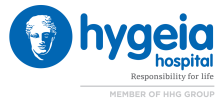- HYGEIA
- Vision & Mission
- Timeline
- Organizational structure
- Press Releases
- Social responsibility
- Awards and Distinctions
- Human Resources
- Scientific & Training activities
- Articles – Publications
- Our Facilities
- Magazines
- Healthcare Programs
- Doctors
- Services
- Medical Divisions & Services
- Imaging Divisions
- Departments
- Units
- Centers of Excellence
- Emergency – Outpatient
- Nursing Service
- Ambulances
- Patients
- Hygeia
- Υπηρεσίες
- Ιατρικά Τμήματα & Υπηρεσίες
When should a woman undergo a mammography?
According to the guidelines of international health organizations, it is recommended:
For women of the general population
- Aged 40-44: Commencement of annual screening by choice
- Aged 45-55: Annual screening
- Aged 55 and over: screening every two years or annually by choice
Screening must continue if the woman is in good clinical condition and has a life expectancy of over 10 years.
For high-risk women (>25%) annual mammography and breast MRI are recommended. This should commence around the age of 30.
This group includes:
- BRCA1-BRCA2 gene mutation carriers
- Women who have undergone radiotherapy of the mediastinum between the ages of 10 and 30
- Women with a 1st degree relative (parent, sister, child) who is a BRCA1-BRCA2 carrier, even if they have not undergone genetic testing
- Women with known hereditary syndromes (e.g. Li-Fraumeni, etc)
For medium-risk women (<15%)
This group includes:
- Women with personal risk of breast cancer, DCIS, LCIS, ADH or ALH (DCIS = ductal carcinoma in situ, LCIS = lobular carcinoma in situ, ADH = atypical ductal hyperplasia, ALH = atypical lobular hyperplasia)
- Women with dense breasts
There is no evidence supporting or discouraging MRI screening as supplementary to a mammography.
A mammography should also be preformed in the following cases: as a follow-up for women with a history of breast surgery; to further investigate clinical findings after breast palpation; and to further examine suspect U/S findings. Mammography should always be coupled with a physical exam by an experienced physician.
- © 2007-2024 HYGEIA S.M.S.A.
- Personal Data Protection Policy
- COOKIES Policy
- Terms of Use
- Privacy Policy
- Credits
- Sitemap
- Made by minoanDesign
Ο ιστότοπoς μας χρησιμοποιεί cookies για να καταστήσει την περιήγηση όσο το δυνατόν πιο λειτουργική και για να συγκεντρώνει στατιστικά στοιχεία σχετικά με τη χρήση της. Αν θέλετε να λάβετε περισσότερες πληροφορίες πατήστε Περισσότερα ή για να αρνηθείτε να παράσχετε τη συγκατάθεσή σας για τα cookies, πατήστε Άρνηση. Συνεχίζοντας την περιήγηση σε αυτόν τον ιστότοπο, αποδέχεστε τα cookies μας.
Αποδοχή όλων Άρνηση όλων ΡυθμίσειςCookies ManagerΡυθμίσεις Cookies
Ο ιστότοπoς μας χρησιμοποιεί cookies για να καταστήσει την περιήγηση όσο το δυνατόν πιο λειτουργική και για να συγκεντρώνει στατιστικά στοιχεία σχετικά με τη χρήση της. Αν θέλετε να λάβετε περισσότερες πληροφορίες πατήστε Περισσότερα ή για να αρνηθείτε να παράσχετε τη συγκατάθεσή σας για τα cookies, πατήστε Άρνηση. Συνεχίζοντας την περιήγηση σε αυτόν τον ιστότοπο, αποδέχεστε τα cookies μας.




































